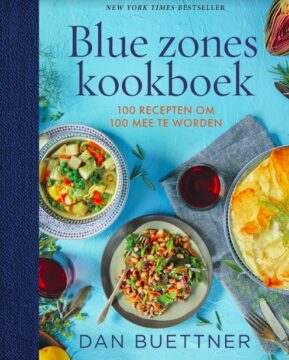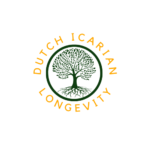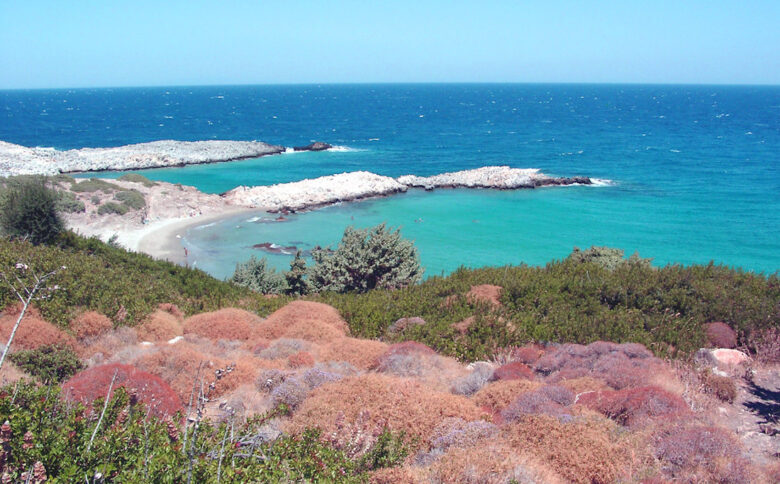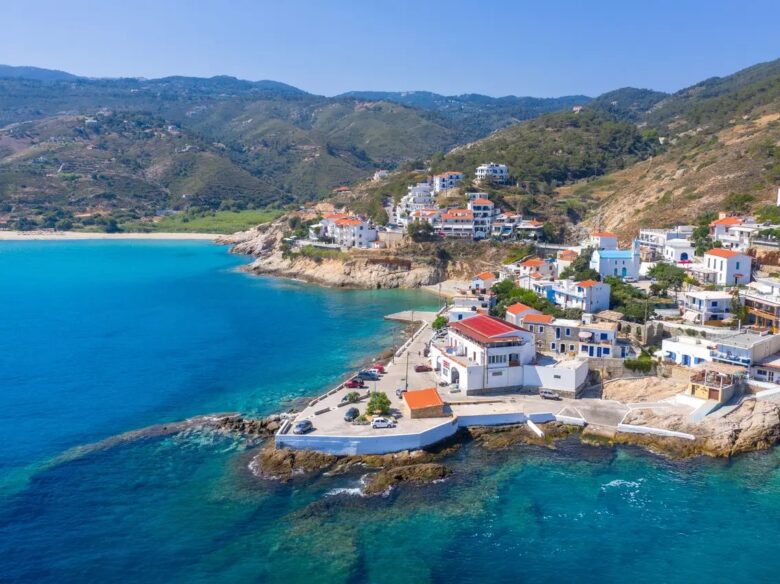In Blue Zones® people eat according to Harvard’s nutritional pyramid, although they probably don’t know it. This means: lots of vegetables and fruit, little animal protein, little added sugars and carbohydrates, but lots of nuts, seeds and legumes. They also rarely eat processed food. A basic rule you can use here is: the more a food resembles its natural form, the more unprocessed it is.

After years of research into this, Dan Buettner has filled a cookbook with 100 healthy recipes inspired by these Blue Zones. These are all recipes that promote human longevity and well-being.
The food in the Blue Zones has the following characteristics:
Lots of vegetables
The residents of Blue Zones all eat a lot of vegetables. In Sardinia and Ikaria people often have their own vegetable garden.
Make your own food
In the Blue Zones, the residents always make their own food. For example, in Sardinia people often make their own cheese, bread and olive oil and in Nicoya they make corn tortillas.
Beans instead of meat
Quite a lot of meat is eaten in Nicoya, but in other Blue Zones this is limited to once a week. Instead, people eat tofu (Okinawa) or lentils and beans (Ikaria and Loma Linda). Black beans in particular are a favorite. On average, about 95% of the diet is plant-based.
Lots of fiber
In Loma Linda, breakfast consists of oatmeal. For breakfast In Nicoya they also just eat black beans, for example in a breakfast tortilla. You can also add brown rice, which is eaten on Okinawa as a healthier substitute for white rice.
In any case, carbohydrates are important: the diet consists of approximately 65 percent carbohydrates, compared to 20 percent fats and 15 percent proteins.
Fish is eaten regularly in a number of places (about 3 times a week), because it contains good fats.
Use lots of herbs
From garlic and cumin to mint and rosemary, Blue Zone residents are fans of spices. People also often drink herbal tea (for example, chamomile or mint) instead of coffee or alcohol – or just a lot of water.
If you want to follow the Blue Zones® diet, it is important to prioritize plant-based food. Cook yourself so you know what’s in your food. Try to avoid artificial additives.
A good example of the Blue Zones nutrition can be found in this recipe from Dan Buettner’s book.
Eternity stew
Ingredients
180 g dried black-eyed beans (or 1 can of 225 g black-eyed beans, drained)
120 ml extra virgin olive oil
1 large red onion, finely chopped
4 cloves garlic, minced
1 fennel bulb, chopped
1 large, firm, ripe tomato, finely chopped
2 tsp tomato paste, diluted with
60ml water
2 bay leaves
1 bunch of dill, finely chopped
salt (optional)

Preparation
If you are using pre-dried black-eyed beans, place the beans in a saucepan and add enough water to cover them. Bring the beans to a boil and let them cook for 1 minute. Remove the pan from the heat and let the beans rest for an hour. Drain and rinse them. (Skip these steps if using canned black-eyed beans.)
Heat half the olive oil in a large pan over medium heat. Add the onion, garlic and fennel and fry the vegetables for about 12 minutes until soft. Stir them occasionally.
Then add the black-eyed beans and stir them well into the vegetables. Then add the tomato and tomato puree and add enough water to cover the mixture. Add the bay leaves. Bring the bean mixture to the boil, then reduce the heat and simmer until the black-eyed beans are half-cooked (if using dried beans), 40-60 minutes. If you are using canned beans, warm the mixture for 10 minutes and go to the next step.
Add the chopped dill and salt to taste. Let the beans simmer for about 20 minutes.
Remove the pan from the heat and remove the bay leaves. Stir the remaining oil into the stew and serve.


